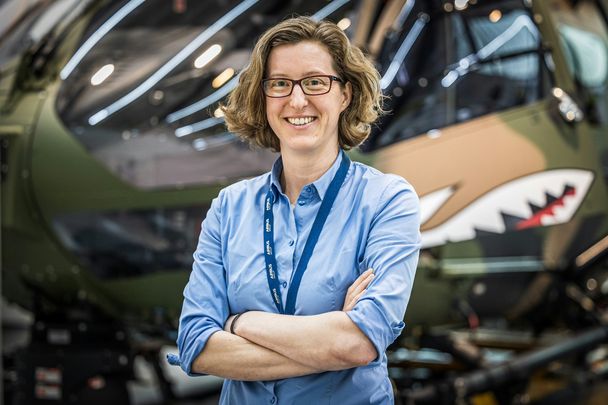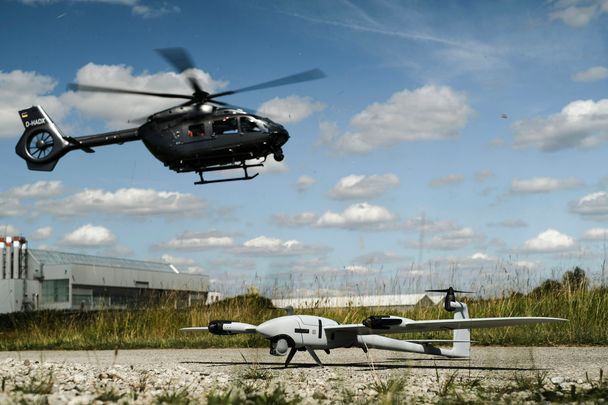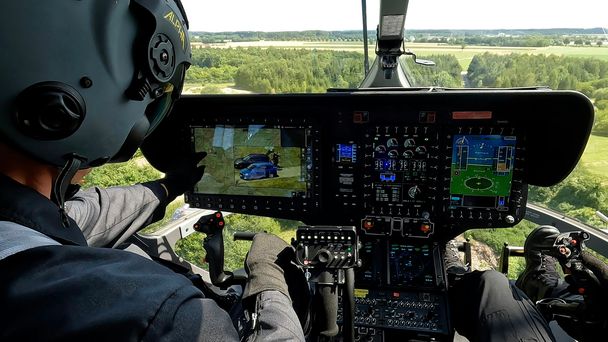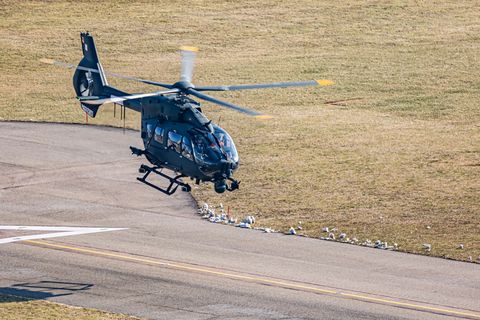Preparing to pioneer: controlling drones from an H145M

Airbus Helicopters uses flying ‘labs’ to test innovation technobricks. Similarly, one H145M has become a lab for military applications, including for MUM-T activities.
"You must imagine two launchers on the helicopter, each with several tubes in which you can theoretically put a drone in each of them. That means you could launch many drones nearly parallel or in a very short sequence." H145M programme manager Constance Pinsdorf is generally all business (she has military and engineering credentials, after all), but she betrays a hint of humour as she describes unmanned drones whizzing by like a scene from a futuristic movie.

Such a scene is, in fact, the possible culmination of the H145M’s manned unmanned teaming (MUM-T) potential. In the last six years, several steps were performed which could offer growth potential for a serial product or capability. That’s why an H145M was used as a kind of demonstrator, on which these kinds of new scenarios or concepts could be tested. In the quest to refine the H145M's MUM-T performance, the team has advanced on fronts as varied as cockpit design, software and a partnership ecosystem.

Symbol of progress
Testing whether the helicopter crew could control a drone in flight began in 2018. Mission accomplished but "we learned it was too high a workload and would have required two more ‘cabin operators’ as crew. This failed to adhere to our “original” helicopter crew concept ," says Pinsdorf.
Manned unmanned teaming necessitates the crew keep track of the drone and therefore cockpit interfaces must help the pilots handle this second 'mission'. The H145M thus underwent a cockpit redesign, getting a new 17-inch display dedicated to drone operation. So successful was this bigger display, a slightly modified version was introduced for the H145 for “civil” applications.
For the drone to carry out a mission largely independently once the crew has given it a command, you need impeccable task-based guidance. For this, Airbus Helicopters sought the support of a software start-up, HAT.tec, to build a strong algorithm to control the drone's actions. Within limits. "The person in the loop always has to press the final button", stresses Pinsdorf.

Show me you mean it
Following tests and demo flights, a trial came in 2022 when the H145M took part in a fictional combat demonstration as part of the future combat air system (FCAS) project. In concert with a jet and several real unmanned 'remote carriers', the H145M's crew took control of one of these “remote carriers”, and with it, its live video stream.
No easy feat because MUM-T introduces additional challenges when communications are involved, be they up, down or, in the case of helicopters, possibly through the rotor level. "We need flexibility on the helicopter's side to handle communications," Pinsdorf says, citing the data link system and installation of antennae on the airframe as two examples.
For the realisation of these capabilities it is essential that helicopter prototypes are available and corresponding simulator testbeds for the team to try out its solutions, especially for data-links to the different types of drone but also the ever-complex algorithm as well as the installation of different antennae. The aim is to have platform-agnostic teaming capabilities but if an operator selects a certain kind of drone, the same capability must ultimately equip the helicopter.
What about several drones, all launched from the helicopter? Research into air-launched effects (ALE) dominates much of the team's focus. Here, too, the H145M is a perfect lab, already equipped with a launcher system which might possibly be reused. Next steps hinge on finding a strong partner for the drone equipment, and on meeting with operators for their input. "We listen very carefully to the military-market and their operators who are well-informed, which informs our baseline: what is needed for real-life operations?" says Pinsdorf.




